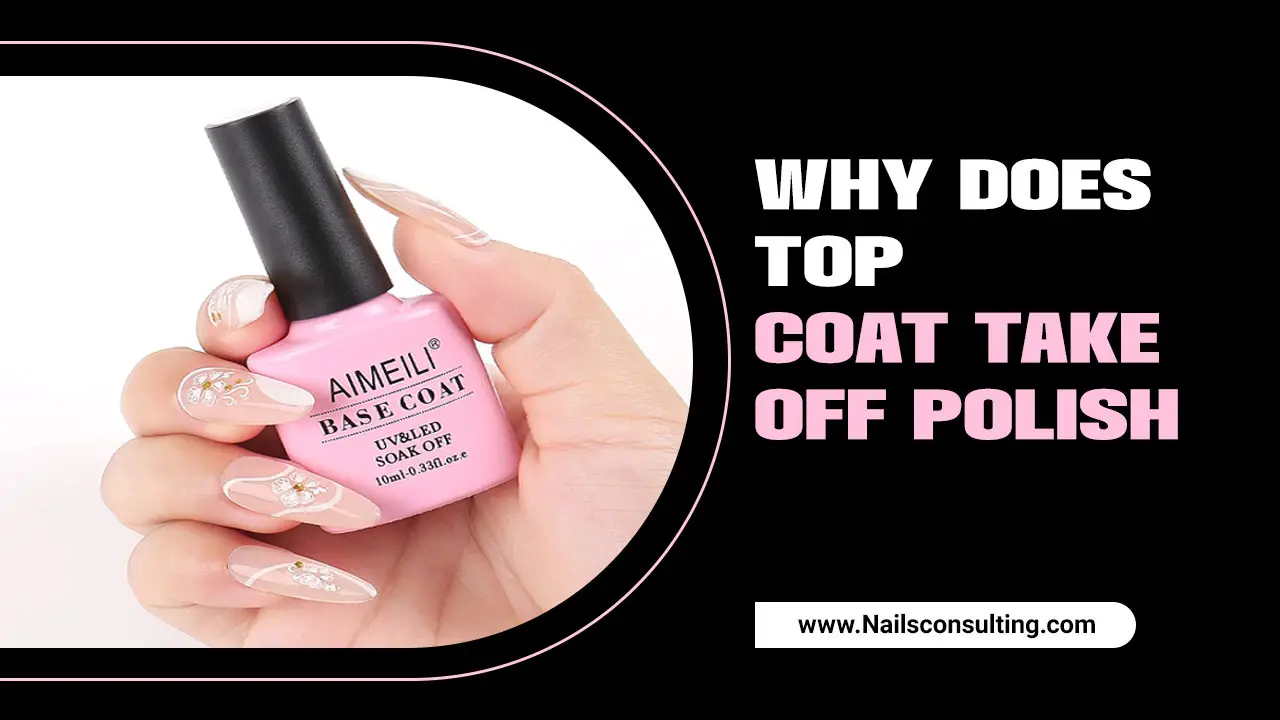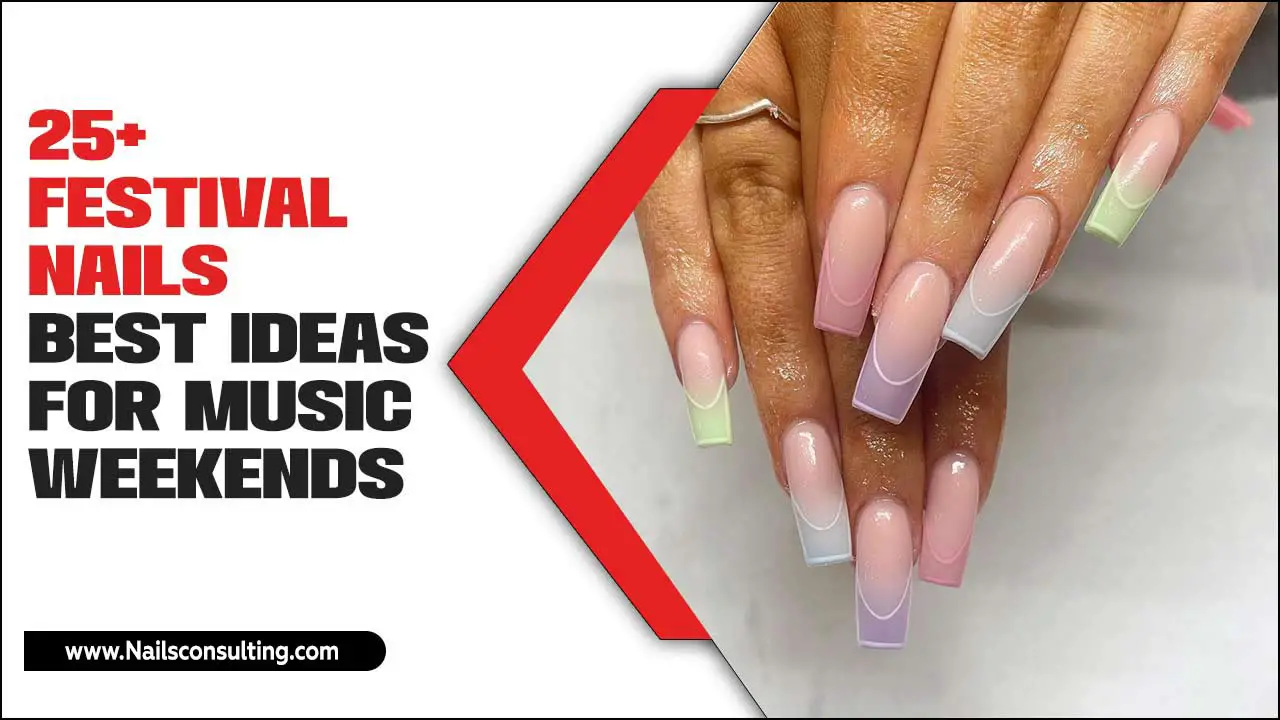Water marble nail designs are achievable for everyone! With just a few supplies and these easy steps, you can create stunning, unique marbled patterns on your nails in no time, even if you’re a total beginner.
Ever scrolled through nail art and felt a pang of “I wish I could do that!”? Water marbling can look intricate and daunting. Many of us have tried it, only to end up with a messy blob instead of a chic design. The good news is, it’s not as complicated as it seems! With the right technique and a little practice, you’ll be creating beautiful, one-of-a-kind nail art that will turn heads. Get ready to transform your nails into tiny works of art. We’re about to break down the water marble nail design step by step, making it super simple and fun!
What is Water Marble Nail Design?
Water marble nail design is a technique where you create swirling patterns by dripping nail polish onto the surface of water and then carefully transferring the design onto your nail. It’s like creating miniature abstract art right on your fingertips! Each design is completely unique, making your manicure truly one-of-a-kind. It started gaining popularity a decade ago and has remained a beloved DIY technique for those who love to experiment with bold, artistic nail looks.
Why Try Water Marble Nails?
- Unique Designs: No two water marble nails will ever be exactly alike.
- Artistic Expression: It’s a fantastic way to show off your creativity.
- Impressive Results: The outcome often looks professionally done, even with simple steps.
- Budget-Friendly: You can achieve salon-quality nails at home for a fraction of the cost.
- Fun Activity: It’s a relaxing and enjoyable DIY beauty project.
Gathering Your Water Marble Essentials
Don’t worry, you don’t need a whole lot of fancy equipment to get started! Most of these items are probably already in your nail polish collection. Here’s what you’ll need to achieve that perfect water marble nail design step by step:
- Nail Polish: At least two contrasting colors are ideal. Lighter colors show up better on dark bases, and vice versa.
- A Cup or Bowl: A disposable plastic cup works best as it’s easy to clean up. It should be deep enough to dip your finger into.
- Room Temperature Water: Not too cold, not too hot. Lukewarm water is perfect.
- Toothpicks or a Thin Needle: For swirling the colors.
- Clear Tape or Petroleum Jelly (Vaseline): To protect your skin from polish stains.
- Cotton Swabs (Q-tips): For cleaning up excess polish around your nails.
- Nail Polish Remover: For precise cleanup.
- Base Coat: To protect your natural nail.
- Top Coat: To seal in your design and add shine.
- A Dark Base Color Polish: This is optional but highly recommended for many designs.
Step-by-Step Water Marble Nail Design Tutorial
Ready to dive in? Let’s get your nails looking fabulous with these easy-to-follow steps for a beautiful water marble nail design.
Step 1: Prepare Your Workspace and Nails
First things first – set up your space! Lay down some old newspaper or paper towels to catch any drips. Make sure you’re in a well-ventilated area, as nail polish fumes can be strong. Now, prep your nails:
- Apply a good quality base coat to all your nails. This protects your nail bed and helps the polish adhere better. Let it dry completely.
- Optional (Highly Recommended for Cleanliness): Apply a layer of petroleum jelly (Vaseline) around your cuticle and the sides of your finger. Alternatively, you can use strips of clear tape, carefully wrapping it around the nail to cover the skin. This creates a barrier that makes cleanup much easier!
- If you’re using a dark base color, apply one or two coats of that now and let it dry thoroughly. This provides a nice contrast for your marble design.
Step 2: Get Your Water Ready
Fill your cup or bowl with room temperature water. Tap water is perfectly fine! The water temperature is crucial; too cold and the polish will clump up, too hot and it will spread too thin. A comfortable, lukewarm temperature is best. Let it sit for a minute to ensure it’s still.
Step 3: Drip Your First Polish Color
Open your first bottle of nail polish. Hold the brush a few inches above the water and let one drop of polish fall onto the center of the water’s surface. Don’t get too close, or the drop might break apart too soon. It should create a small, circular film on top of the water.
Step 4: Add Your Second (and Third) Color
Immediately after the first drop, select your second polish color. Again, hold the brush a few inches above the water, but let this drop fall directly onto the center of the first drop. Continue this process with a third color if desired, dropping it into the center of the previous one. Aim for 2-3 colors for the best effect without making it too muddy.
Step 5: Swirl Your Polish Design
Now for the fun part – swirling! Grab a toothpick or a thin needle. Gently insert it into the center of the polish design and slowly drag it outwards. You can create swirls, circles, or any pattern you like. You can also gently blow on the surface of the water to help the colors spread and create organic patterns. Keep your swirling quick, as the polish starts to dry quickly on the water.
Tip: Avoid over-swirling, as this can make the colors blend together into a muddy mess. Aim for distinct lines and patterns.
Step 6: Dip Your Nail
Once you have a swirl pattern you like, it’s time to dip! Quickly dip your prepared finger (with the base coat and protective barrier) into the water at an angle, right through the colorful design. Try to scoop up the pattern in one go. For best results, dip your finger at roughly a 45-degree angle. Once your nail is submerged under the surface and has picked up the design, gently push the remaining polish to the side with your finger or a toothpick before pulling your nail out.
Step 7: Remove the Protective Barrier
Carefully pull your finger out of the water. If you used tape, gently peel it away. If you used Vaseline, use a cotton swab dipped in nail polish remover to carefully wipe away the excess polish from your skin and cuticles. Be precise and take your time to get a clean finish!
Step 8: Create More Designs (If Needed)
You can repeat steps 2-7 for each nail. After each dip, you’ll need to clean the water surface. Use a toothpick to remove any leftover polish, or pour out the water and refill the cup for a fresh start if the design looks messy.
Step 9: Apply Top Coat
Once all your nails have their water marble design and the polish is mostly dry, it’s time to seal the deal. Apply a generous layer of clear top coat over each nail. This will smooth out any slightly bumpy textures, intensify the colors, and protect your beautiful water marble art from chipping. Let it dry completely.
Troubleshooting Common Water Marble Problems
Even with the best intentions, sometimes water marbling can be a bit tricky. Don’t get discouraged! Here are some common issues and how to fix them:
| Problem | Cause | Solution |
|---|---|---|
| Polish doesn’t spread or forms a solid film. | Water is too cold, or polish is too thick. | Use room temperature water. Thin your polish slightly with a drop of nail polish thinner (never remover, as it breaks down the formula). |
| Design is muddy or blended. | Over-swirling, too many colors, or colors were added too slowly. | Swirl gently and quickly. Stick to 2-3 colors. Drop colors in succession without long waits. |
| Polish sticks to skin instead of nail. | Not enough protection (Vaseline/tape), or dipped too slowly. | Apply a thicker barrier of Vaseline or ensure tape fully covers the skin. Dip your nail quickly and directly into the most colorful part of the swirl. |
| Design looks dull after top coat. | Top coat was applied too thick or too soon after the design. | Allow the water marble design to dry for a few minutes before applying a lighter coat of top coat. Use a quick-drying top coat. |
| Polish is not spreading on the water surface. | Nail polish is old or has gone thick. The water could be too warm. | Use fresh nail polish. Test the water temperature – it should feel just slightly warm. Try a drop of “nail polish thinner” (not remover) for very thick polishes; this will help revive them. |
Tips for Even Better Water Marble Results
Want to elevate your marble game? Here are some pro tips:
- Use Quality Polishes: Not all nail polishes are created equal. Creamy, opaque formulas generally work best for water marbling. Highly pigmented polishes often give richer results.
- Practice Makes Perfect: Don’t expect perfection on your first try! The more you practice, the better you’ll get at controlling the swirls and dipping.
- Experiment with Colors: Try different color combinations. Contrasting colors pop, while similar shades create a more subtle effect. Metallic or glitter polishes can add a fun twist.
- Clean Your Tools: Make sure your toothpicks are clean for each swirl.
- Patience with Drying: Allow each layer (base coat, design, top coat) to dry sufficiently. This prevents smudging and ensures longevity.
- Consider Nail Polish Thinner: If your favorite polishes have become a bit thick over time, a nail polish thinner (like the one from OPI or Ever Glaze) can help revive them for better water marbling. Avoid using nail polish remover, as it can negatively alter the polish formula. You can find good quality thinners from reputable beauty supply stores or directly from brands.
For more insights on keeping your nail polish in top condition, check out resources like the FDA’s guidance on cosmetics manufacturing to understand ingredient quality and safety, which indirectly relates to how well polishes perform in creative applications.
Exploring Different Water Marble Techniques
Once you’ve mastered the basic technique, you can explore variations:
- Circular Swirls: Drop colors in concentric circles and swirl from the center outward.
- Straight Line Swirls: Drop colors in a line and swirl back and forth.
- Color Blocking Marble: Use a larger amount of each color to create bolder blocks of color within the marble pattern.
- Target Design: Drop a large amount of one color, then a smaller amount of another in the center, and swirl to create a “target” like effect.
- Using a Needle Tool: A fine needle can create more intricate, spiderweb-like patterns compared to a toothpick.
Water Marble Nail Design: A Comparison of Effectiveness
When considering DIY nail art, water marbling stands out for its artistic output versus effort. Here’s a quick look:
| Technique | Effort Level | Artistic Potential | Beginner Friendly | Uniqueness |
|---|---|---|---|---|
| Water Marble | Medium | Very High | Moderate (requires practice) | Extremely High |
| Stamping | Low-Moderate | High | High | Moderate (repeats designs) |
| Freehand Painting | High | Very High | Low | Very High |
| Stickers/Decals | Very Low | Moderate | Very High | Low (standard designs) |
As you can see, water marbling offers a high level of artistic uniqueness that’s hard to beat for the effort involved, especially for those willing to practice a bit.
Conclusion
There you have it – your super simple, step-by-step guide to creating stunning water marble nail designs! Remember, the key is to experiment, have fun, and don’t be afraid to make a little mess. Each attempt is a learning experience, and soon you’ll be an old pro at swirling those gorgeous patterns onto your nails. Embrace the uniqueness of each design and wear your marbled masterpieces with pride. Happy marbling!
Frequently Asked Questions About Water Marble Nail Design
Q1: What kind of nail polish works best for water marbling?
A: Opaque, creamy, and highly pigmented nail polishes generally work the best. They create vibrant swirls on the water surface. Avoid very sheer, metallic, or glitter-heavy polishes for your first few tries, as they can be harder to get a good pattern with.
Q2: How long does a water marble design typically last?
A: With a good base coat and a strong top coat, a water marble design can last anywhere from 5-10 days, similar to a regular manicure. Ensure your top coat is fully dry to prevent smudging.
Q3: Can I use any container for water marbling?
A: A disposable plastic cup is often recommended because it’s easy to clean up afterwards. Any shallow container that allows you to comfortably dip your finger into the water is suitable. The depth is more important than the material.
Q4: My polish is sinking immediately. What am I doing wrong?
A: This usually happens if the water is too hot or too cold. Aim for lukewarm, room temperature water. If your polish formula is very thick, it might also sink quickly. Try thinning it slightly with a dedicated nail polish thinner.
Q5: How do I clean up the mess on my fingers?
A: The best way is to protect your skin beforehand! Apply a thick layer of Vaseline or tape around your nail and cuticle area. After dipping, carefully remove this barrier with a cotton swab dipped in nail polish remover. This method is far less messy than trying to clean up after the fact.
Q6: Can I do this on artificial nails?
A: Absolutely! Water marbling works beautifully on acrylics, gels, or any type of artificial nail. Just ensure the surface is smooth and clean before you begin the marbling process.
Q7: What if I don’t have many colors? Can I still do water marbling?
A: Yes! Even with just two contrasting colors, you can create beautiful water marble designs. The contrast often makes the patterns more distinct and eye-catching.




